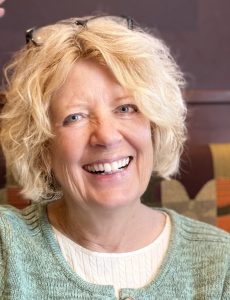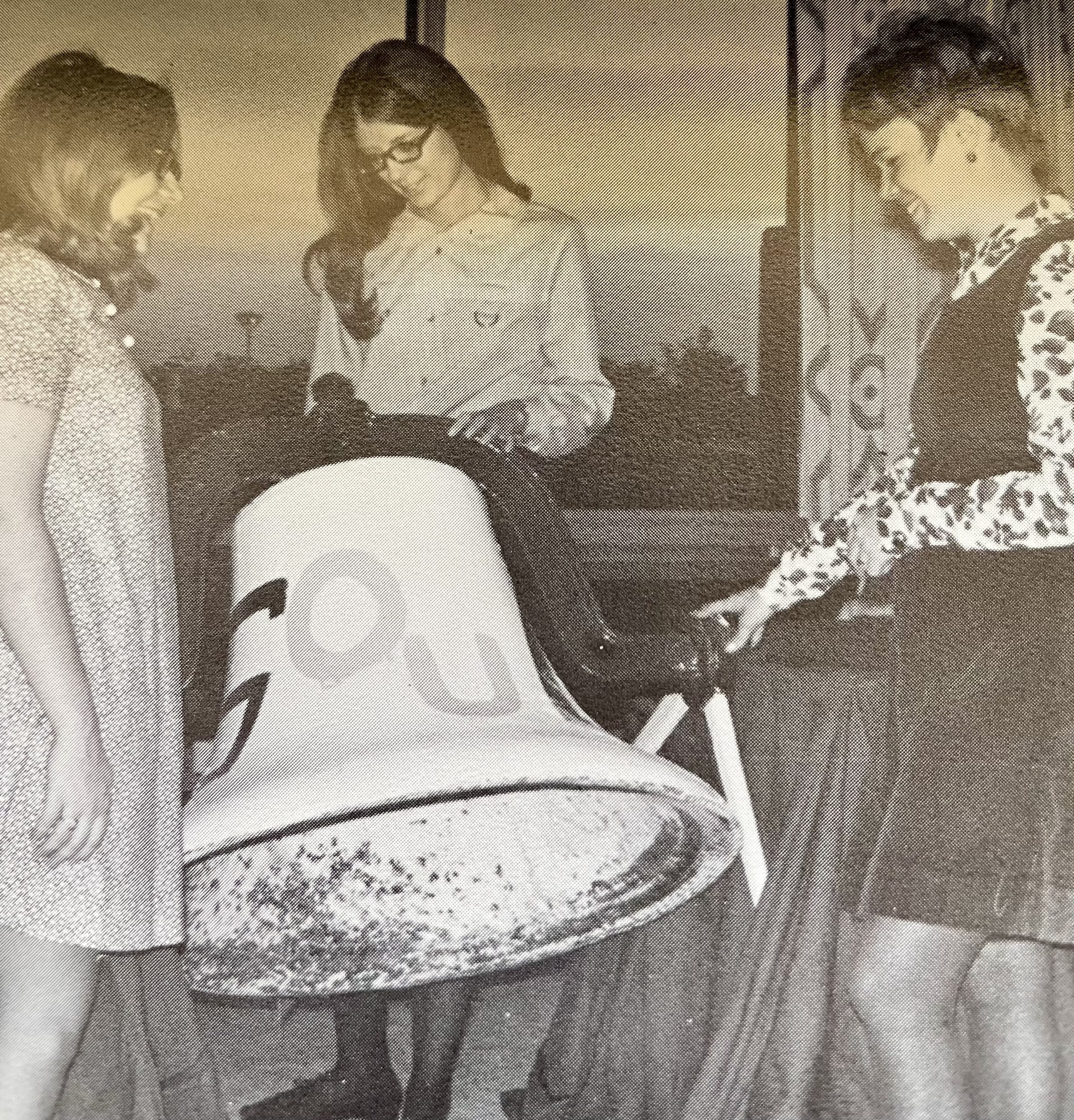
Margaret Jelsma’s earliest memories involve plants and soil. As a little girl, her family moved into a new subdivision in Macomb County, and she remembers how they would have to buy back the top soil that the developers scraped away. Even at the age of 4, she was with her family, sifting topsoil and gravel to get it ready for planting.
“I’ve been playing in the dirt since I was a kid,” she said. Margaret also fondly recalls her grandfather in Tennessee, which was home to her father’s family. Her grandfather worked in a rubber factory, but he was still deeply rooted in rural Tennessee and would return often to the farm. She helped him with his vegetable garden, as well as with his roses. “He taught me how to propagate roses by cutting,” she told me, and they would use gallon brown glass bleach jugs, with the bottoms cut off, to cultivate the flowers.
She can still see him preparing the glass, which she witnessed at 5 or 6 years old: he tied a string around the bottom of the jugs, and lit the string on fire, which heated up the glass along the line. He then tapped the weakened area with a screwdriver and hammer, cleanly breaking off the bottom, which allowed the rose cuttings to breathe. This was a man who took his gardens seriously.
Of all the vegetables and plants her grandfather tended, though, Margaret remembers one most fondly: “grandpa’s real tomatoes,” fresh off the vine. Other, less welcomed figures, were very fond of these tomatoes, too. After her grandfather retired, a cow got loose nearby, made its way into his garden, which was not fenced in, and “decided to have lunch,” Margaret said. Her grandfather was understandably furious, considering all the time, effort, and care that he invested in those tomatoes, just like all his plants.
Margaret still has her hands in the earth, although in a very different setting. Since 2013, when she officially became a member of the Garden Club, Margaret has been gardening at Meadow Brook Estate. She knew nothing of the group until she retired, when she discovered the club in the newspaper. It didn’t take long for her to get heavily involved, not only as a weekly gardener, but also as a member of the bylaws committee, which she was invited to join by Connie Yeo. She also joined Connie at Hilltop garden, which looks down on the front circle, where they both have gardened for years.

Margaret’s first exposure to Meadow Brook was decades earlier, though, as a student at Oakland University. She received her undergraduate and graduate degrees from OU, both in mathematics education, and she started her journey on campus in 1967–an important, somber year in the story of Meadow Brook Estate. Margaret remembers that fall when Matilda Wilson died; “the whole campus was involved,” she said. Later, Margaret held an on-campus job working in food service at the Meadow Brook Pavilion (now the amphitheater), which kept her close to Meadow Brook Hall, as well.
Her husband, Roger, whom she met at OU, also had a Meadow Brook connection–while a student, he worked in grounds and maintenance for the university, and after Matilda died, he helped move items to be sold and transferred. The university the Wilsons founded brought Margaret and her husband together, and they built their life, and home, in Rochester, where they raised one daughter.
Margaret had a successful career as an educator and administrator in Utica schools. She taught Junior High Math in the district for 28 years, and then went into Central Administration for another 10 years. Joining every textbook committee, and every curriculum committee, she wanted to guide the impact on her classroom. And that’s precisely what she did, especially with the advent of classroom technologies.

While she was teaching algebra, for example, she taught her ninth grade algebra students basic programming. Margaret’s husband had a software company that did time and attendance, and this connection led to the early introduction of technology into the district–Roger secured a teletype machine, and his friend at Michigan Bell provided a phone jack–so they could plug into the Macomb County network. It was a punch tape system! When desktops came in, Margaret’s was one of the first schools to request a computer lab, and she was one of the first to teach the use of computers to Junior High students.
When Margaret moved to district level administration, she was teaching teachers how to use this technology–for attendance, grading, among other uses–trying to convince them to utilize the tool. “They didn’t know what a mouse was,” Margaret explained, saying that some were dizzy because of the cursor–this was in the 1990s. They would go into a building with a group of substitute teachers, and Margaret would do training in a library with a desktop, her own keyboard, and get to work convincing teachers about the benefits of embracing the future.
“Some teachers gravitated toward it,” Margaret said, “and some teachers fought it tooth and nail… Our goal was this: we wanted the students to acquire knowledge differently, through the use of different technology.” They wanted students to master technology and demonstrate their knowledge using technological tools. During this time, though, not everyone was onboard. “Some teachers would sit with their backs to me,” Margaret said, describing her trainings, “so I had to come up with other ways to do it.” It was like dealing with a classroom of kids at times, but, according to Margaret, “If you don’t have the frustration, you don’t make an effort.”

Margaret loved being in the classroom, and she relied on humor with her team to teach and manage her relationships. Not much has changed, and here at Meadow Brook, she uses the tools of teaching–her warmth, her patience, her humor, and her hands-on approach–to succeed in her administrative roles in the Garden Club. She has entered her historic third term as President, and she is not one to sit still, or act as a “President in isolation.” “Our goal,” she told me, “is to move the club forward, expand the gardens… and to continue supporting The Hall.” And she feels that Meadow Brook, with its strong administrative and leadership teams, is in a great position to advance. She enjoys working in the gardens, with the club, and maintaining The Hall’s history, and it is also crucially important to her, she explained, to center the central force behind The Great Estate’s success, especially in the Gardens: our volunteers.
When Margaret reflects on her time at Meadow Brook and in the gardens, and when I asked her where she seeks beauty on the Estate, there was too much for her to single out alone, as this space is characterized by so much unique beauty. In the spring, you can find her in the woodlands, and in other gardens, watching the perennials bloom; and then there is Hillside, where she gets so much satisfaction in taking chances on new plants, and seeing them flourish. There, like in her classroom, or here at Meadow Brook, we’re “always trying new things,” she said, “seeing what grows.”
Connor Newton, Visitor Services Manager


